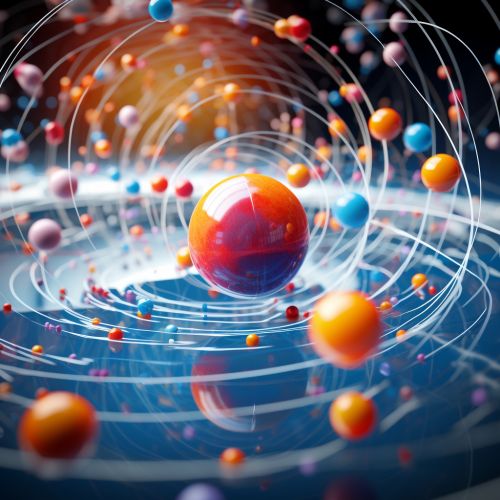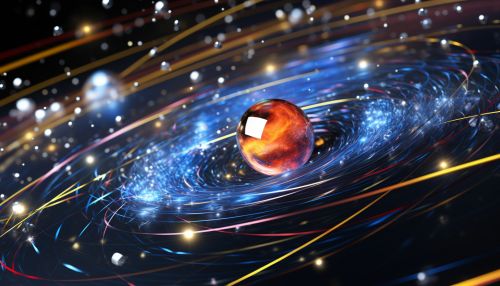Quark
Introduction
Quarks are a type of elementary particle and a fundamental constituent of matter. Quarks combine to form composite particles called hadrons, the most stable of which are protons and neutrons, the components of atomic nuclei. All quarks are assigned a baryon number of 1/3, and they are the only known carriers of fractional electric charge.


Properties
Quarks are characterized by their mass, electric charge, color charge, and spin. They are the only known particles in the universe that interact through all four fundamental forces of physics: gravity, electromagnetism, weak nuclear force, and strong nuclear force.
Mass
The mass of quarks is not a fixed value but depends on the energy scale at which it is measured. This is due to a phenomenon known as quantum chromodynamics (QCD) scale dependence.
Electric Charge
Quarks carry a fractional electric charge, either +2/3 or -1/3. This is in contrast to the integer charges carried by leptons and gauge bosons.
Color Charge
Quarks carry a type of charge called color charge, which is the source of the strong nuclear force. There are three types of color charges: red, green, and blue.
Spin
Quarks are fermions, particles with half-integer spin. They follow the Pauli exclusion principle, which states that no two fermions can occupy the same quantum state simultaneously.
Types of Quarks
There are six types, or "flavors", of quarks: up, down, charm, strange, top, and bottom. Each flavor is a unique combination of mass, electric charge, color charge, and spin.
Up Quark
The up quark is the lightest of all quarks and carries a charge of +2/3. It is a constituent of protons and neutrons.
Down Quark
The down quark is slightly heavier than the up quark and carries a charge of -1/3. It is also a constituent of protons and neutrons.
Charm Quark
The charm quark is approximately 1,350 times heavier than the up quark and carries a charge of +2/3. It was discovered in 1974.
Strange Quark
The strange quark is slightly heavier than the up quark and carries a charge of -1/3. It was discovered in 1947.
Top Quark
The top quark is the heaviest of all quarks and carries a charge of +2/3. It was discovered in 1995.
Bottom Quark
The bottom quark is approximately 4,200 times heavier than the up quark and carries a charge of -1/3. It was discovered in 1977.
Quark Interactions
Quarks interact with each other through the strong nuclear force, which is mediated by particles called gluons. This interaction is responsible for holding quarks together to form hadrons.
Quark Confinement
Quarks are never found in isolation but are always confined within hadrons. This is due to a phenomenon known as quark confinement, which is one of the key features of quantum chromodynamics.
